By Sean Fagan
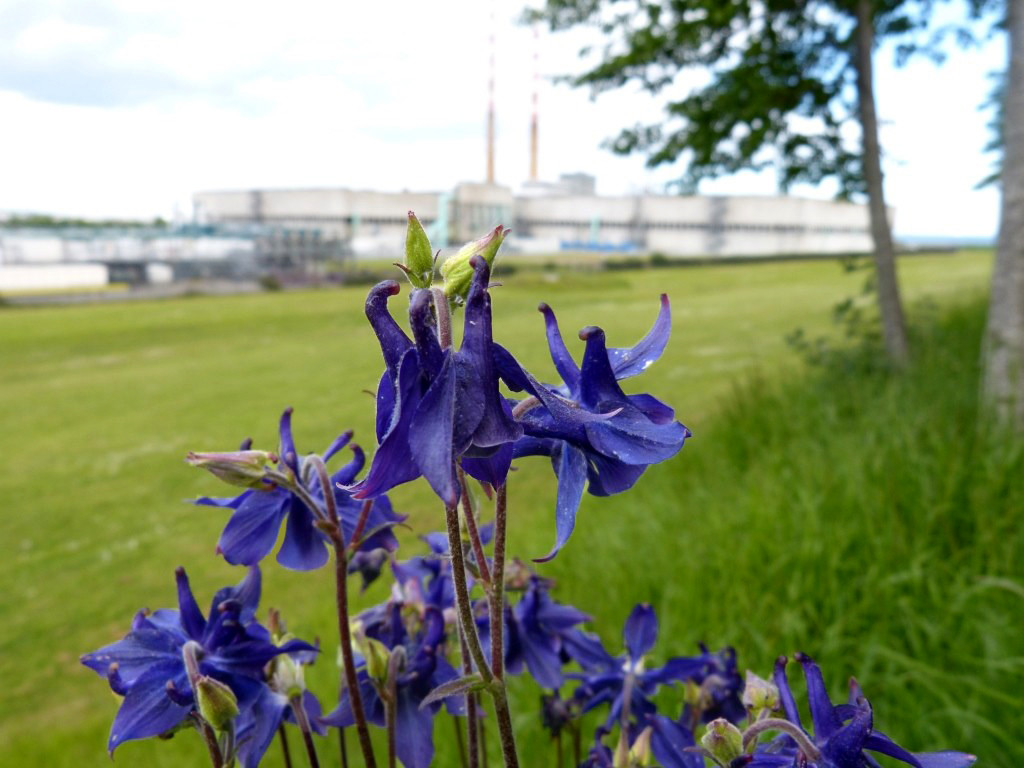
A native plant I usually find in broad-leaf woodlands...COLUMBINE (Aquilegia vulgaris). It was quite unusual to find this striking, elegant plant near an industrial estate in Dublin city, Ireland (Photo: Sean Fagan).
.
.
Many bushcrafters live in towns or cities.
Practising bushcraft in urban areas can be challenging, however, one of the easiest bushcraft skills to practise in towns or cities is urban botany.
Urban botany is a fascinating activity that will greatly improve your plant identification skills - in addition, becoming familiar with the many urban plants that have colonised our cities & towns can foster an admiration of plants.
Admiring plants for the intrinsically interesting, resourceful biological entities that they are, can be an incentive for you to further deepen your bushcraft knowledge of wild plants.
I strongly urge urban-dwelling bushcrafters to practise urban botany as the benefits are many and varied.
.
ARE THERE MANY PLANTS LIVING IN URBAN AREAS?
Many wild plants are adaptable and resilient, and many of them have successfully colonised urban areas.
A while back I visited a small (approx. 5 meters by 2 metres) overgrown section of canal bank in Dublin city.
Amidst the hustle and bustle of city life there was a great variety of plants - with a remarkable 22 different plant species vying for survival on this tiny section of canal bank.
.
List of plant species present on canal bank site: 1. Dandelion 2. Daisy 3. Greater plantain 4. Nettle 5. Board-leaved dock 6. Common reed 7. Common cleavers 8. Germander speedwell 9. Prickly sow thistle 10. Chickweed 11. Winter heliotrope 12. Maidenhair spleenwort 13. Willow herb spp. 14. Wall lettuce 15. Red dead-nettle 16. Shepard’s purse 17. Yarrow 18. Common mouse ear 19. Red valerian 20. Pellitory-of-the-wall 21. Ivy-leaved toadflax 22. Wall flowerThe above list of plants is not exceptional for a lot of urban habitats - as urban habitats can be surprisingly productive.
The majority of the above plant species are native, edible, nutritious, somewhat palatable, widespread and common in the British Isles and most of Europe - which is typical of most of the plants you will find in a lot of urban habitats.
In addition to the edibility of most of the plant species on the canal bank they also have medicinal properties.
Examples of some of the more well-known medicinal benefits is notable - plantain for coughs and bleeding, nettle for constipation and kidney infections, dandelion for detoxification and liver complaints, even the humble daisy can be used as an anti-inflammatory.
CAUTION: Consuming urban plants is not recommended because of pollutants and the prevalence of certain diseases in urban areas, such as animal-borne diseases like Leptospirosis (Weil’s disease) and Toxocara canis & cati.
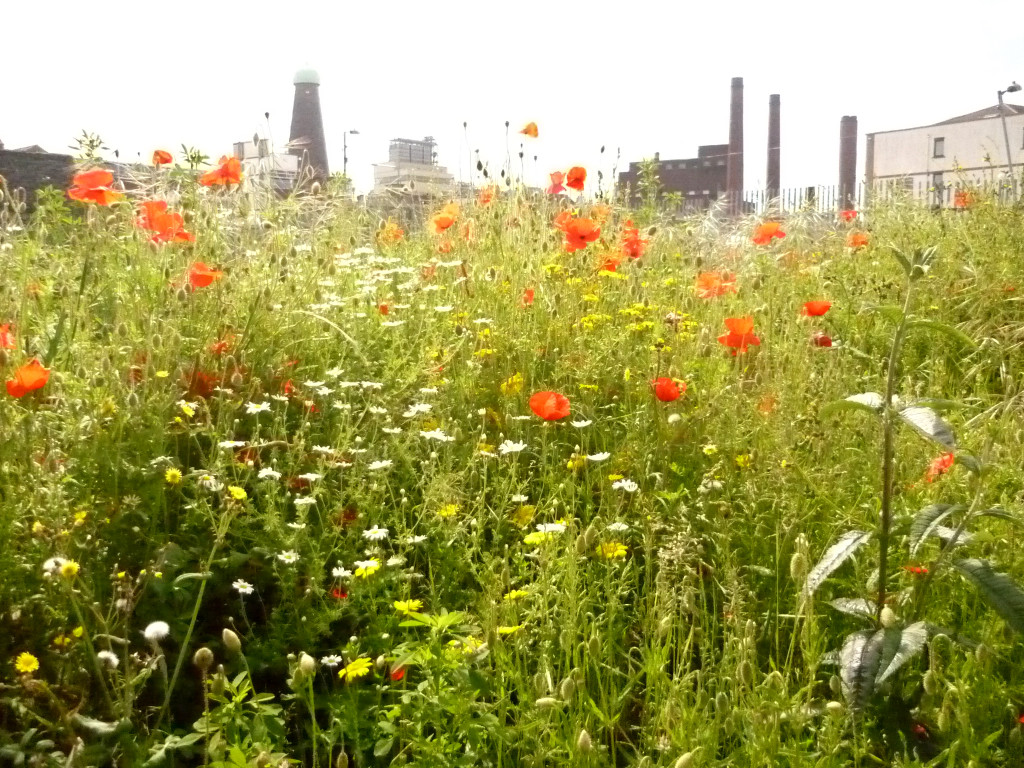
A riot of wild colours...with the famous Guinness Brewery buildings in the background (Photo: Sean Fagan - Dublin, Ireland).
.
It's all about the Family...
There is a great diversity of native and non-native herbaceous plants and trees in urban areas.
When it comes to botany the expression "variety is the spice of life" is very true.
On closer inspection plants are surprisingly intricate but have certain features that are common to all plants, for example, most herbaceous plant species have stalks, leaves and flowers.
Within that commonality of plant features there is also a great range of details that is specific to each plant species.
The rich golden petals of dandelions are starkly different from the bright white, elegantly-pointed petals of wild garlic, whereas the long, coarse leaves of comfrey are significantly different from the neat, minuscule leaves of chickweed.
At its heart, botany is very much about reveling in the diversity of form, colour and texture of plants, and withinin that diversity of details the good botanist attempts to tease out patterns of similarity between plants that are related to each other, that belong to the same family.
Learning the main traits of the different plant families is a very efficient way of catergorising and memorising plants.
For example, all plants in the Brassicaceae family have flowers with four petals and six stamens (4 tall stamens, 2 short stamens). Lady’s smock (Cardamine pratensis) and Shepard’s purse (Capsella bursa-pastoris) possess petals which differ from each other in size, shape and colour but both species possess the diagnostic Brassicaceae pattern of four petals with six stamens - four of which are tall with the remaining two stamens being short.
So why is it important to know members of the Brassicaceae family? Most Brassicaceae plants, including Lady's smock and Shepard's purse, have a strong mustard flavour - when added to a meal they can give a much desired punch of flavour. That is just one good reason to know members of the Brassicaceae family - there are quite a few others.
If you come across any plant in the world you don't know that has four petals, with four tall stamens and two short stamens then you will know that plant belongs to the Brassicaceae family - already you have a head start in narrowing down the identification of that plant.
The take-home message is that each plant family has key, salient features - if you learn them off you have a great, convenient way of categorising and memorising plants and drastically reducing the time it takes trying to identify plants - as many excellent plant identification books are categorised by plant families.
You certainly do not need to learn all the key traits of each family, as many families of plants do not exist in your locality or country or are very rare or have very few bushcraft applications.
In a future article I will go through the most important plant families to learn - if you are living in Ireland or the British Isles.
Link: Wildflower Families of Ireland
.
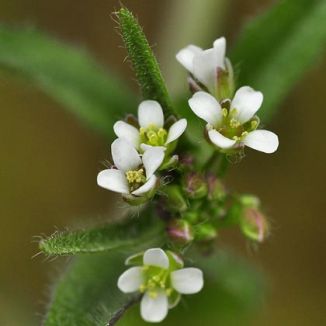
The diminutive white petals of Shepard’s purse
A great feature of many cities is the presence of botanic gardens. In a botanic garden you can scrutinise, at your leisure, herbaceous plant and tree species from all over the world.
You can begin to ingrain, within your memory, the similarities and differences between different tree and plant genus and species from all over the world, which can be important when travelling aboard.
Just as important, you can study a wide range of native trees and plants which can be great for improving your plant identification skills of native flora in your own country.
I cannot recommend botanic gardens enough.
Some parks and public gardens can provide a reasonable substitute to botanic gardens, but to be honest they are nowhere near as good as botanic gardens.
A helpful feature of botanic gardens is that all or most of the plants are labeled, which can speed up the whole process of learning about different plants all the more easier.
A lot of the labels display not only the common name of the plant but also the scientific name and crucially, the plant family name.
Additionally, many of the plants are often located together as families within Botanic gardens - which greatly facilitates learning about plant features that are common to each plant family.
.
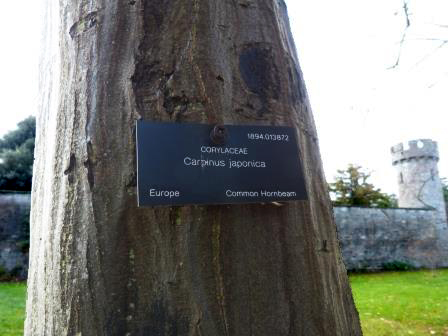
A labelled Hornbeam tree, Botanic Gardens of Dublin, Ireland - providing some salient information, including its general geographic distribution (Photo: Sean Fagan).
It's important to invest a significant portion of your botany time studying common and widespread poisonous plants – so you can recognise and avoid these plants in the future.
There are quite a few poisonous plants that live in urban areas.
For example, hemlock water dropwort (Oenanthe crocata) can be a surprisingly widespread plant along urban and rural waterways and is a plant well worth getting to know as it is very poisonous and similar in appearance to quite a few edible plants such as wild carrot and cow parsley. Urban areas can provide a good platform for learning about many common poisonous plants.
Be mindful of poisonous plants that have edible look-a-likes. The toxic leaves of foxglove, Digitalis purpurea, is very similar to the edible and medicinal leaves of comfrey, Symphytum officinale. This is a good example of a toxic plant having a very similar looking appearance to an edible plant.
WHERE DO YOU FIND URBAN PLANTS? Urban plants occur in an astonishingly broad variety of urban environments. Below is a partial list of urban habitats I have found to be very productive for sourcing urban plants: • Canal & River Banks • Pavements (great habitat for tenacious urban colonists such as chickweed and Shepard’s purse) • Parks, Public Gardens and Other Public Green areas such as Football Pitches • Waste lands.
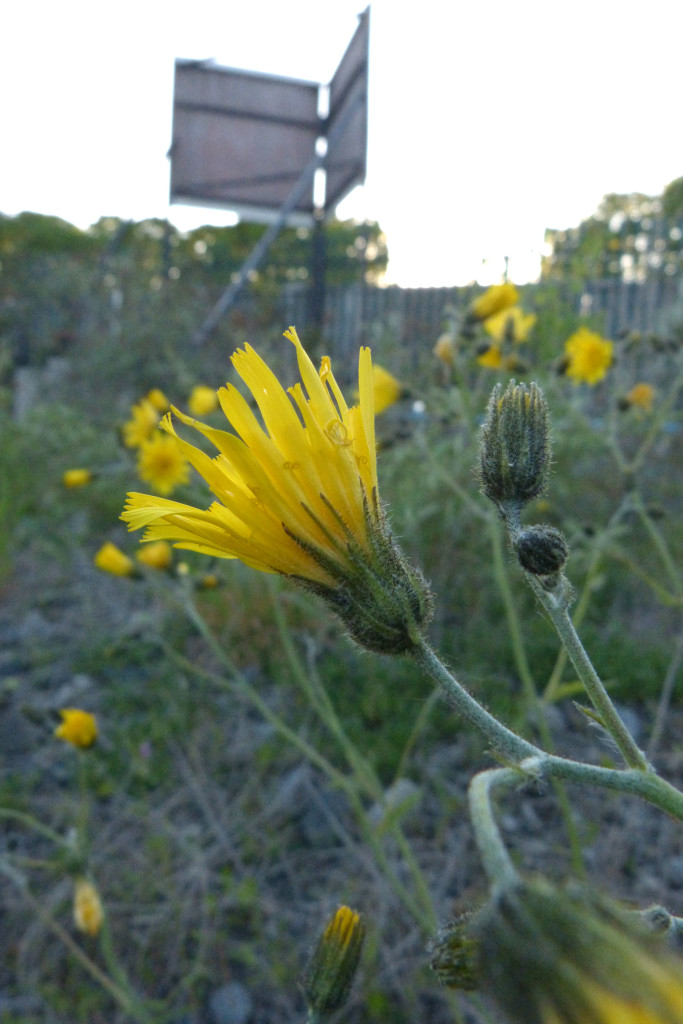
Prickly sow thistle (Sonchus asper) on abandoned waste ground, Dublin, Ireland (Photo: Sean Fagan).
If you live in an urban area or are visiting an urban area with some time to spare, consider dipping your toes into the absorbing area of urban botany.
Wild plants are inherently interesting with a great variety of colours, shapes, details and adaptations - they are, in my opinion, as interesting as any other life form on this planet.
Don’t take my word for it – go out and find out for yourself - you will not be disappointed.
.
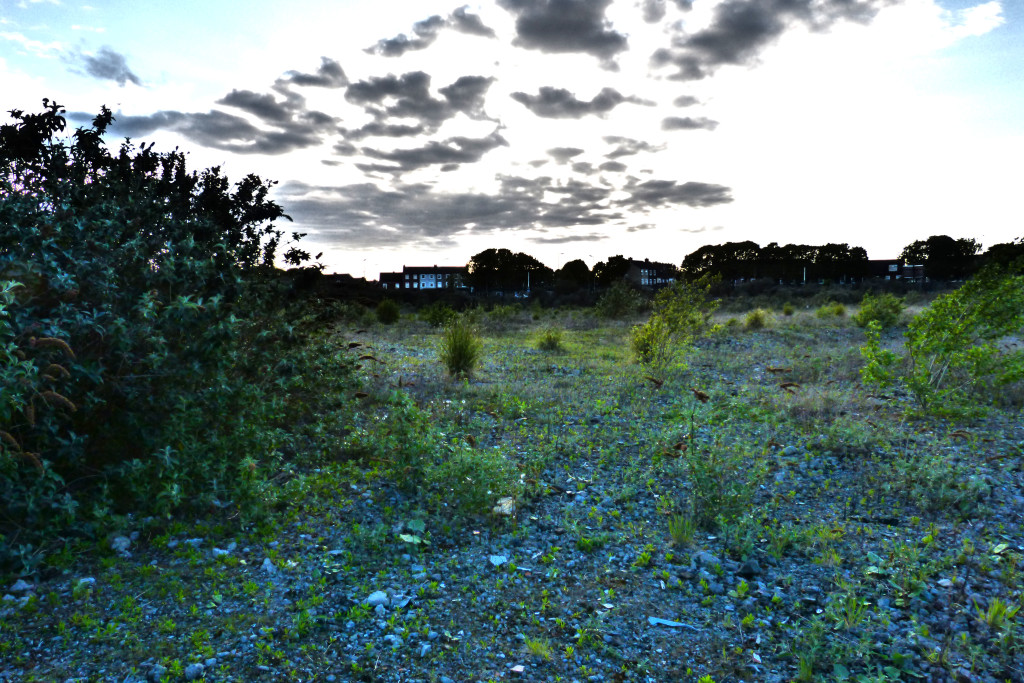
Urban areas are often rich in wild plants - this abandoned gravel quarry - a harsh plant habitat in general - is already showing remarkable signs of plant colonisation (Photo: Sean Fagan - Dublin, Ireland).
.
As a bushcrafter, the more you can familiarise yourself with plant species and the families they belong too, the better a bushcrafter you will become - because you will be better able to recognise and utilise the various plants and trees that form the basis of so many bushcraft projects.
The tough, elastic wood of elm excels in the construction of spring traps and bows - chopped pine needles steeped in hot water make a nutritious tea and silverweed root provides a very convenient, starchy snack – but you first need to be able to identify these plants and many others if you want to avail of the many benefits of plants.
Urban botany can provide a great base and springboard for learning many important, widespread and common plant species and families.
. Summary Points:1. There is a great diversity of native and non-native plants & trees in urban areas 2. Wild plants are surprisingly common in urban areas and are found in a wide variety of urban habitats 3. Many cities have botanic gardens, which are outstanding for improving plant & tree ID skills 4. Urban plants are generally not safe to consume 5. Studying urban plants will greatly improve your knowledge of plants in non-urban areas because many plants that exist in urban areas also exist in non-urban areas (i.e. wild/rural areas).
.
Happy botanical adventures...
.
“I like it when a flower or a little tuft of grass grows through a crack in the concrete. It's so f***ing heroic."
George Carlin.
. .. Related photo-journal on this website:- Wild Plants (Photographic sample of wild plants of Ireland and further afield)
.
Related articles on this website:- Only a Fool eats Fool's Parsley (A good introductory article to the important Umbellifer family)
- 7 Bushcraft Uses of the Sycamore Tree
- 9 Bushcraft Uses of the Holly Tree
- The Peerless Wild Pear Tree
.
Recommended Reading: • Botany in a Day by Thomas J. Elpel • Wild Food by Ray Mears & Gordon Hillman • A Modern Herbal by Mrs M. Grieve.
*Check us out on Instagram, Twitter & Facebook for more outdoor-related topics.
Recent Comments